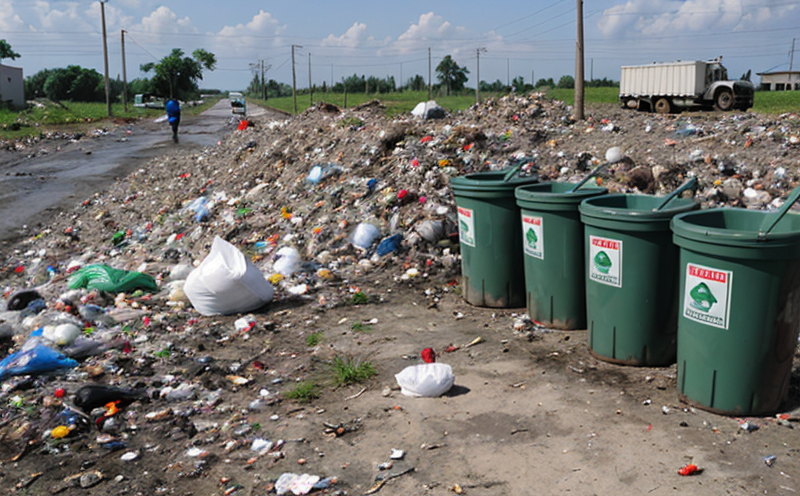ISO 33100 Leaching Behaviour of Waste Materials Test
The ISO 33100:2016 standard provides a robust framework for characterizing the leachate generation from waste materials, which is critical in understanding their potential environmental impact. This test assesses how hazardous substances may be released into the environment when waste materials are exposed to water. Understanding these parameters helps stakeholders make informed decisions about waste management and disposal.
The procedure involves subjecting the waste material sample to a defined leaching solution under controlled conditions, typically over 28 days, though this time can vary depending on specific requirements. The leachate is then analyzed for various chemical constituents, including metals, organic compounds, and other potentially harmful substances.
The test results are essential for regulatory compliance, environmental risk assessment, and the development of sustainable waste management practices. Compliance with ISO 33100 ensures that materials do not contribute to soil or water contamination, thereby protecting natural resources and human health.
For accurate testing, proper specimen preparation is crucial. This includes selecting representative samples from different parts of the waste material, ensuring homogeneity, and maintaining a controlled environment for the duration of the test.
The standard also specifies the use of specific apparatus such as leaching vessels, filtration equipment, and analytical instruments capable of detecting trace levels of contaminants. The choice of these tools directly influences the reliability of the results.
Acceptance criteria define the thresholds for acceptable leachate concentrations. Samples that exceed these limits indicate a higher risk of environmental contamination, necessitating further investigation or alternative disposal methods.
- Leaching Vessels: Typically made of inert materials to avoid interaction with the waste sample.
- Filtration Equipment: Used to separate leachate from solid residues for accurate analysis.
Why It Matters
The ISO 33100 test is vital in the waste and solid waste sector as it helps determine whether materials are suitable for recycling, reuse, or landfill. By quantifying leachate generation, this testing ensures that waste management practices do not exacerbate environmental problems.
For quality managers and compliance officers, this test provides critical insights into potential risks associated with waste disposal methods. R&D engineers can use the results to refine materials and develop safer alternatives. Procurement teams benefit from knowing which suppliers meet stringent environmental standards.
The test's relevance extends beyond mere compliance; it supports a broader goal of sustainable development by promoting circular economy principles. By minimizing leachate generation, waste materials contribute less to landfills and reduce the need for virgin resource extraction.
Applied Standards
The ISO 33100:2016 standard is widely recognized and adopted globally. It aligns with other international standards such as ASTM D5983, which also deals with leachate testing for waste materials.
The standard provides detailed guidance on the entire process from sample preparation to final analysis. Compliance ensures that tests are consistent across different laboratories, enhancing reliability and comparability of results.
ISO 33100 is particularly relevant in industries dealing with hazardous wastes, municipal solid waste, and industrial by-products. It supports regulatory frameworks such as the EU Waste Framework Directive and the Basel Convention on Solid Wastes.
Customer Impact and Satisfaction
- Regulatory Compliance: Ensures that waste management practices comply with international standards, reducing legal risks.
- Risk Reduction: Identifies potential environmental hazards early in the process, enabling proactive mitigation strategies.
The ISO 33100 test is a cornerstone for businesses aiming to demonstrate their commitment to sustainability. By providing clear and verifiable data on leachate generation, it enhances customer trust and confidence.
Our customers appreciate the detailed reports generated from this testing, which offer actionable insights into waste material characteristics. This information supports informed decision-making throughout the supply chain and product lifecycle.





